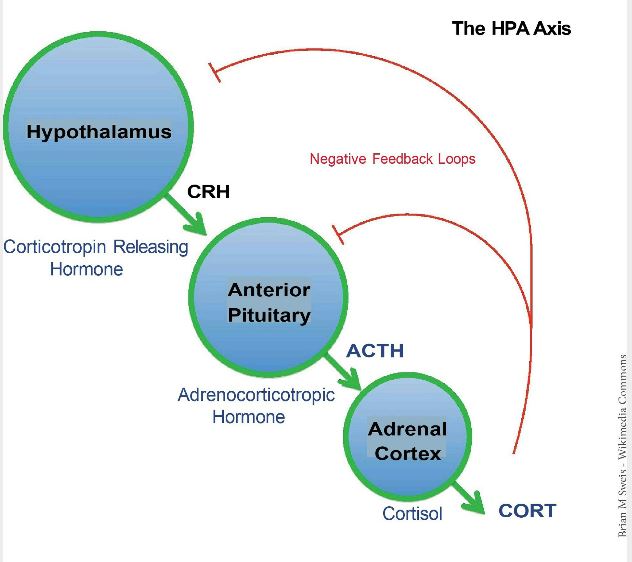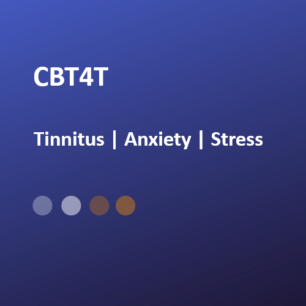Excerpt from: Dahlitz, Matthew, (2017) The Psychotherapist's Essential Guide to the Brain, Dahlitz Media
In 1914, the physiologist Walter Cannon named the sympathetic response to a threat the “fight or flight” response. As we have observed, the chemical response to this fight-or-flight response is known as the hypothalamic–pituitary–adrenal (HPA) axis response. When we perceive a threat, the corticotropin-releasing hormone (CRH) is released from the hypothalamus together with beta endorphins. CRH is produced in the paraventricular nucleus (PVN) of the hypothalamus, and this triggers the release of adrenocorticotropin hormone (ACTH) in the pituitary gland. Interestingly, CRH will also inhibit the secretion of reproductive hormones and subsequent reproductive functions.
The beta-endorphin release from the hypothalamus plays a role in pain reduction and stimulates the release of epinephrine from the adrenal medulla. Vasopressin is also released from the PVN, and this plays a role in regulating blood pressure and facilitates the release of ACTH.
ACTH flows from the pituitary gland into the bloodstream and releases the hormone cortisol from the adrenal cortex. (The adrenal glands sit above each kidney.) Levels of glucocorticoids like cortisol are closely monitored at each step of the HPA axis as a feedback mechanism to regulate the stress response. Cortisol increases blood-sugar levels, suppresses the immune system, and increases metabolism. Because high levels of cortisol suppress the immune system—the assumption being that the suppression helps to protect against an overactivation of the immune system and minimize inflammatory tissue damage—it has been observed that high levels of cortisol will lengthen wound healing time. As in the monitoring of glucocorticoids to modulate the HPA-axis response, there is also a feedback loop involving the immune system in which certain cytokines can activate the HPA axis.
When the HPA axis is set in motion by a perceived threat, or an exaggerated fear of something that is not an actual, physical threat, the physiological response can be taxing and potentially damaging to the body. Chronically raised glucocorticoid levels not only increase blood-sugar levels and suppress the immune system but also inhibit learning, because new neural connections in the hippocampus are damaged, and even previously established memory retrieval is inhibited.
The HPA Axis Response
The hypothalamic–pituitary–adrenal (HPA) axis response is the physiological mechanism that activates the body to respond to a threat. When a threat is detected by the amygdala, a physiological response is mediated through the hypothalamus–anterior pituitary gland. A neurohormone—corticotropin-releasing hormone (CRH) that has been manufactured in the paraventricular nucleus of the hypothalamus—triggers the anterior pituitary gland to release adrenocorticotropin hormone (ACTH) into the blood stream. The ACTH then triggers the release of glucocorticoids such as cortisol from the adrenal cortex above the kidneys. Feedback mechanisms in the hippocampus, hypothalamus and pituitary gland monitor the rising levels of cortisol in the blood and modulate the HPA axis stress-response cascade accordingly.
In the case where someone feels they are dealing with an extreme, uncontrollably stressful situation (such as the severe physical or sexual abuse of a child, or constant life-threatening situations as in war), the feedback mechanisms that dampen the HPA axis stress-response cascade can be damaged, and glucocorticoid levels continue to escalate. These excessive amounts of glucocorticoids can damage activated glutamate synapses and pyramidal cells in the hippocampus (where there are many glucocorticoid receptors), destabilizing previously formed neural connections and thus neural/mental function in the hippocampus. This may be positively correlated with the reduction in volume of the hippocampi of individuals who have suffered extreme stress and been diagnosed with PTSD.

Ref: Dahlitz, M. (2017) The Psychotherapist's Essential Guide to the Brain, Dahlitz Media
